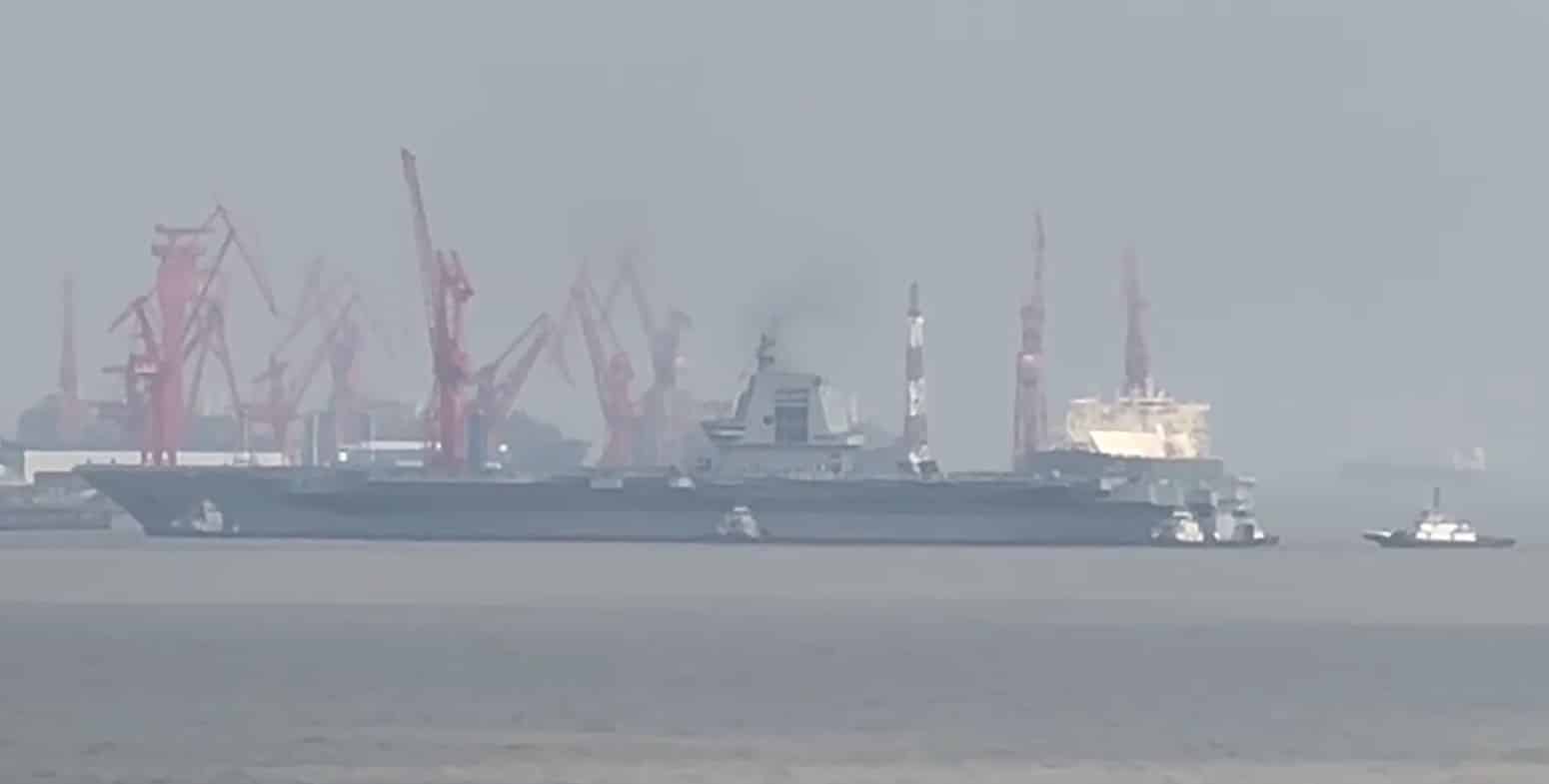Beijingwalker
Elite Member
- Nov 4, 2011
- 74,393
- 103,398
- Country of Origin

- Country of Residence

Chinese Aircraft Carrier Fujian Starts First Sea Trial
First sea trial for Chinese supercarrier comes after over six years of construction and fitting out work in Jiangnan. Fujian may enter service with the Chinese Navy by 2026.
Alex Luck 29 Apr 2024China’s third aircraft carrier Fujian has left Shanghai for her first sea trial today, April 29, 2024. Fujian vacated her moorings at Jiangnan on Changxing Island in the Yangtze River Delta under her own power, as evidenced from social media imagery. The first sea trial is a significant milestone on getting China’s first supercarrier equipped with electromagnetic catapults ready for service. The carrier moved out of berth assisted by several tugboats as covered in moving footage circulated on Chinese social media and on “X”, formerly Twitter.

Aircraft Carrier Fujian pulling out of her berth at Jiangnan, aided by tugboats. Image taken as still from footage shared via “X”.
Imagery of Fujian previously showed the carrier testing her engines around April 21. The observation created some anticipation that the ship would sail out on the occasion of the anniversary for the Chinese Navy on April 23. That day historically marks the inception of the East China Military Region Navy, typically shortened to “East China Navy”, as announced by Zhang Aiping in April 1949 during the Chinese Civil War. The Central Military Commission in 1989 officially designated the date and event to mark the founding of PLAN. That date however went by with Fujian remaining at berth, perhaps illustrating that PLAN is more concerned with sticking to technical schedules over symbolic gestures.

Fujian at her launch on June 17, 2022. The three construction shelters onboard cover the electromagnetic catapults. Image Chinese state media.
The journey so far
The sea trial represents the most recent milestone in a development now spanning six years since the first sighting of a “superblock” hull module for the future aircraft carrier at Jiangnan back around July 2018. The first construction phase for Fujian consisted of assembling superblocks into larger hull segments at a bespoke new facility on Changxing Island, for a duration of two years. Around May 2020 the builder moved these segments into a proper drydock for final assembly of the carrier itself. Construction continued at brisk pace for another two years until the carrier launched on June 17, 2022, amidst much fanfare and formal reports providing additional detail via Chinese state media.

Jiangnan module assembly facility undertaking the early construction of aircraft carrier Fujian, before the yard moved super-modules into drydock for final assembly. Image via Chinese social media.
The roughly two year intervals from module construction to drydock final assembly to the first sea trial now are notable, though likely a coincidence more than a serious intention. It is worth recalling also that construction of the ship, like other Chinese naval building programs was likely affected to some extend by the COVID pandemic, which had a dramatic impact on the Chinese economy and society.
About Aircraft Carrier Fujian
Aircraft carrier Fujian takes her name from the eponymous Chinese province in southeast China. The territory, home to over 40 million people, is located directly opposite Taiwan, a fact that inevitably carries a political message given Beijings relationship to the island country the Communist Party considers a renegade province and firmly claims as part of the Chinese nation. The carrier also uses hull number 18, following from the two previous aircraft carriers Liaoning (16) and Shandong (17).

Fujian in a touched up overhead image, recent date. Note flight deck markings applied and several aircraft mockups including KJ-600 visible on deck. Image via Chinese social media.
Chinese official sources are traditionally opaque on technical details of new military developments. The People’s Daily, the official state media of the Central Committee, at the time of launch specified the size of Fujian as exceeding 80,000 tons. The report also confirmed that the carrier uses electromagnetic catapults and arrestor gear, a detail already widely assumed to be the case by the PLAN watching community. The Global Times tabloid furthermore speculated that the carrier would see service with PLAN within two to three years. This schedule however appears optimistic given the unprecedented nature of this development.
Notional specifications of Fujian
Multiple other specifications and technical characteristics are evident from imagery. Basic measurements for the hull are a length of approximately 316 metres, a beam across the flight deck of 72 metres average and 76 metres at the widest point. Hull beam at waterline level is around 39 metres. The carrier features two aircraft elevators, three catapults and four arrestor wires. Self defence armament consists of multiple launchers for the HQ-10 short range surface to air missile system and additionally several H/PJ-11 30 mm autocannons featuring a distinct new rectangular panel radar for target acquisition.












